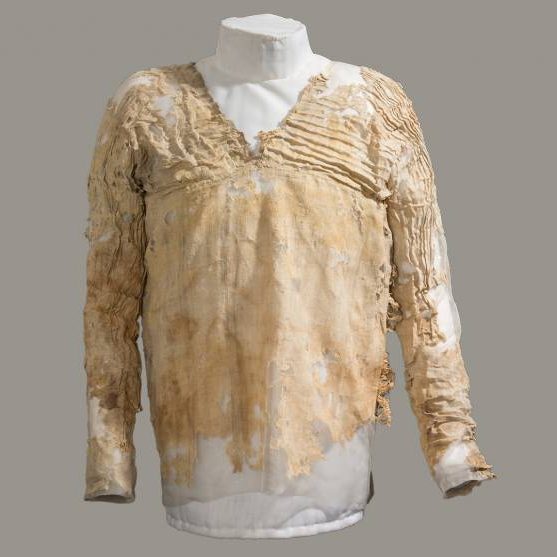Renowned for its timeless appeal and natural elegance, linen has captured the attention of prestigious designer labels such as Ralph Lauren, Burberry and Gucci.
With its inherent durability, linen stands the tests of time and offers a natural alternative to fast fashion, embodying a perfect blend of sophistication, functionality and sustainability.
History
Linen is derived from flax, a blue-flowering plant that predominantly flourishes in Western Europe, the Eastern Mediterranean and India, but was likely first domesticated in the Fertile Crescent. Flax has been grown for millennia, with linen textiles being some of the oldest found in the world. Dyed flax fibres found in a cave in South-Eastern Europe suggest that the use of woven linen fabrics from wild flax may date back more than 30,000 years.
Linen was commonly used for mummification and burial shrouds in ancient Egypt, with white linen clothing also worn widely during the same period. For example, the Tarkhan dress, which is considered to be amongst the oldest woven garments in the world and dated to between 3482BC and 3102BC, is made of linen.

Source: University College London
Fast forward to the 18th century and beyond, and the linen industry became increasingly important in several European economies as well as in the American colonies. It was at the time that industrialisation and machine production replaced manual work and the production of linen moved from households to modern factories.
Uses
Linen has many natural characteristics and advantages, making it the perfect choice for a variety of applications.
Linen fabrics are highly breathable and allow for air circulation which, in turn, keeps the wearer cool and comfortable in warmer weather. The material is often used for products such as workwear due to its incredible durability. Because of its soft and gentle qualities, clothing, bags, towels, napkins and upholstery are commonly made from linen fibres. It is also often the preferred material for bed sheets due to the material’s comfortable and hypoallergenic properties. Wallpaper, wall coverings and rugs also favour linen materials, alongside industrial products such as luggage, canvases and sewing thread.
Production Process
Making linen fabric begins with the planting of flax seeds. It takes approximately 100 days for the plant to be mature enough to harvest. Harvesting, which is completed by machinery, starts when the flax seeds have turned brown, and the stems have become yellow.
The first step to preparing flax for linen production is for all leaves and seeds to be removed from the plant, leaving only the stalks. These are then broken to separate the inner fibres of the flax plant. Once separated, the inner threads are combed to create thin strands which are then used in the spinning process.
During spinning, the fine fibres are worked with devices to create rovings that can then be spun, after which the linen strings can be dried, treated and dyed – ready to be woven into their final products.
Controversies
Consumers are often concerned that growing flax requires high levels of water consumption due to the water-intensive cultivation issues that can arise from the production of other fibres. In reality, in most cases natural rainfall supplies enough water to irrigate flax plants, hence meaning that flax cultivation doesn’t cause negative socio-environmental impacts through water depletion or water scarcity.
Due to flax thriving in temperate climates, such as that of Western Europe, the plant also requires very few fertilisers or pesticides to produce, again making linen a highly sustainable natural material where production processes create minimal environmental degradation.
Linen’s Future
Linen is one of the most sustainable fabrics known to man, yet it represents less than one percent of all textile fibres consumed worldwide. With one hectare of flax removing 3.7 tonnes of CO2 from the atmosphere, this means that all European grown linen removes approximately 250,000 tonnes of CO2.
With consumers increasingly rejecting fast fashion, and designers opting to create using sustainable fibres, linen offers a beautiful and natural alternative to synthetic fibres, making it a material that is set to be at the forefront of the slow design movement.
Sources
https://www.dalstonmillfabrics.co.uk/fabric-blog/what-is-linen-fabric
https://cariki.co.uk/blogs/the-green-road/why-is-linen-sustainable